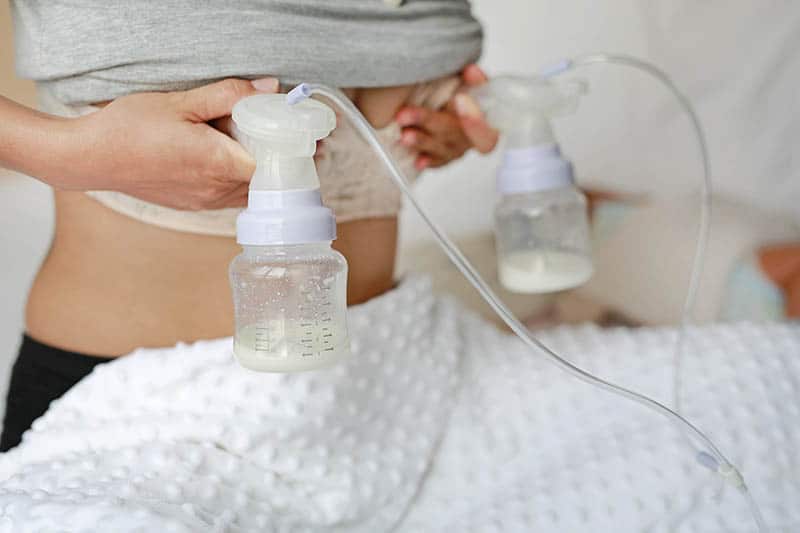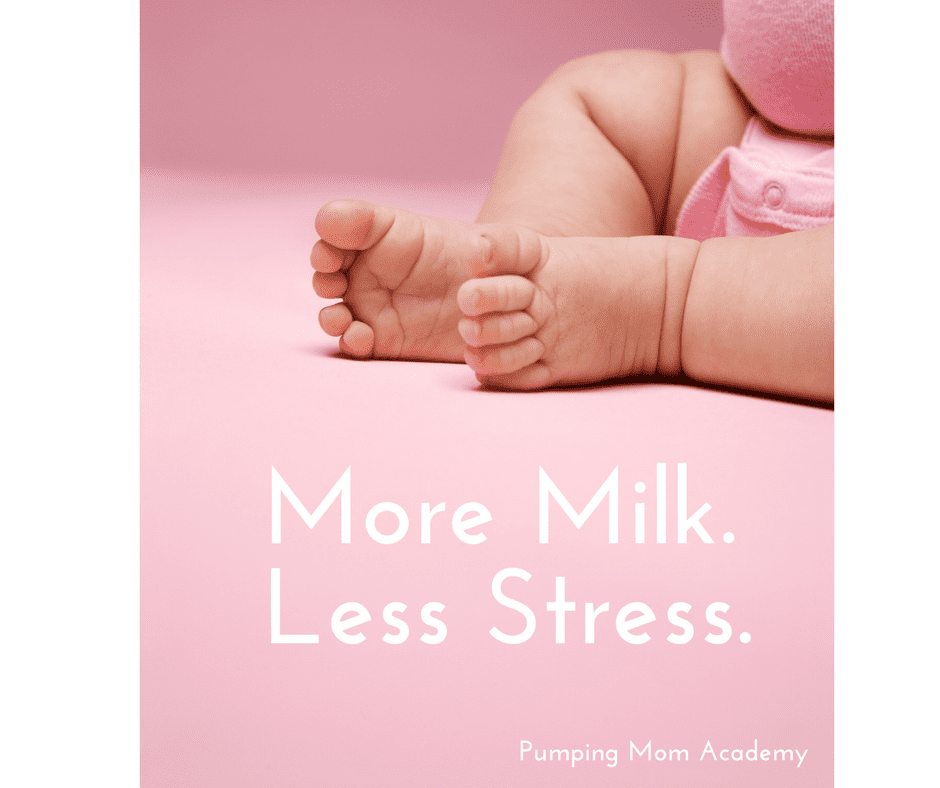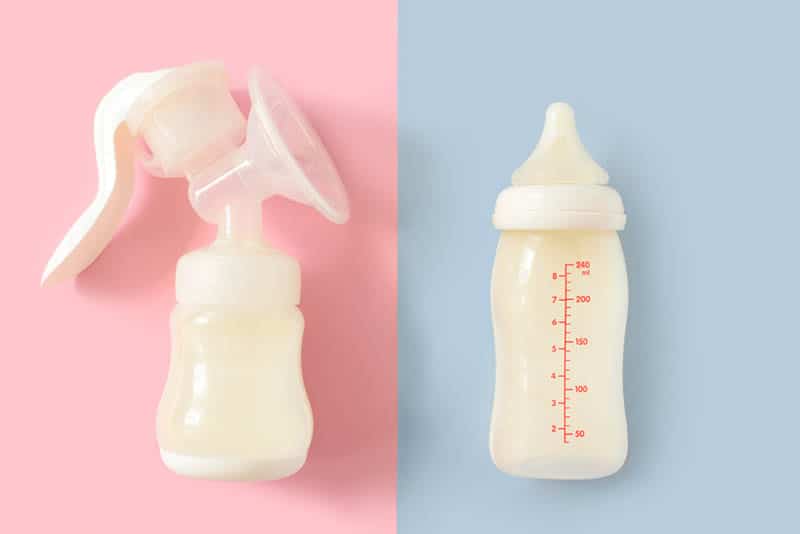Is there anything more frustrating than being stuck to a breast pump but hardly anything comes out? I’ve been there, mama!
In fact, I’ve pumped for all three of my kids which adds up to be about 3,000 hours! Needless to say, I’ve learned a thing or two about pumping breast milk.
If you’re reading this post and struggling to produce enough milk, I just want to say that I know this is hard for you.
You are doing such a great job making liquid gold for that sweet baby.
Okay, let’s dive in!
How to pump more breast milk
1. Inspect your pump
In order to pump more breast milk, your pump must be performing well. First, inspect those little white membranes.
Are they attached correctly? Are there any tiny holes or tears?
When is the last time you replaced them? (For most pumps, you’ll want to replace them every two months.)
Next, take a second to inspect all your pump parts. Does everything fit together nice and tight?
Finally, inspect your shield/horn. Does it fit your body? You may need a larger size if your nipple scrubs the inside of the shield.
If your pump is under-performing, or you’re thinking about buying a new one, here are my top picks:
| Image | Title | Price | Buy |
|---|---|---|---|
Top Top
Top | Medela Pump in Style Advanced with On the Go Tote, Double Electric Breast Pump | Buy Now | |
 Top
Top | Spectra Baby USA - S2 Plus Premier Electric Breast Pump, Double/Single, Hospital Strength | Buy Now |
If you want to make sure you’re still pumping enough milk for your baby while you’re out of the house and on the move, you’re going to need a breast pump bag.
2. “Prime” your breasts by massaging them before (and during) pumping

Every single time you pump, before you hook yourself up, do a breast massage.
Make sure your hands are nice and warm. (Don’t forget your armpits. Did you know you have milk-making tissue there too?!)
You may even hand express a little milk before you hook up to the pump.
3. Use soft suction…at first
When you first turn on your pump, it’s tempting to crank up the intensity of the suction to high. I mean, you just want to pump that milk as quickly as you can and move on, right?
Well, sometimes it helps to start off with a softer suction and then gradually (very gradually) increase the suction power.
You never want the suction to be so strong that it’s painful.
Starting slow and then gradually increasing can help you pump more breast milk.
Sometimes on certain pumps the valves start to lose shape and won’t create a good suction to pump milk, so I’ve found the perfect solution:
- Works with select Medela breast pumps, (does not work with Sonata, Freestyle, Swing, or Harmony breast pumps)
- Standard Size is 24 mm it Includes 1 - 24 mm breast shield and connector (breast shield not interchangeable), 1 - valve, 1 - membrane.
Prices pulled from the Amazon Product Advertising API on:
Product prices and availability are accurate as of the date/time indicated and are subject to change. Any price and availability information displayed on [relevant Amazon Site(s), as applicable] at the time of purchase will apply to the purchase of this product.
4. Use heat (with caution)
Heat is AMAZING at helping that milk to flow.
If you have a heating pad, you can use that while pumping or place it on your chest a few minutes before starting.
I’m currently using this heater and I can’t recommend it enough:
- King Size UltraHeat, 3 Heat Settings with Moist Heat | Light Blue, 12-Inch x 24-Inch
- Heat pad includes sponge so it can be used with moist or dry heat
- 3 heat settings so you can customize the intensity of heat
- Soft, washable cover
- 9-foot cord lets you relax wherever you need to
Prices pulled from the Amazon Product Advertising API on:
Product prices and availability are accurate as of the date/time indicated and are subject to change. Any price and availability information displayed on [relevant Amazon Site(s), as applicable] at the time of purchase will apply to the purchase of this product.
If you don’t have a heating pad, you can always heat up a hand towel in the microwave for a minute or so.
A word of caution though, be careful not to use heat around your baby. You don’t want him/her to get burned!
5. Set a timer
You’ll want to make sure you’re pumping long enough. Ideally 15-20 minutes, but sometimes more if you space your pumping sessions out farther.
(We go into this in great detail in Pumping Mom Academy Lessons 2 and 3).
You can set a timer to make sure you’re keeping track of how long you’ve been pumping.
This is the timer I’m using:
- Egg shape design is like a lovely craft, and the stainless steel shell is really hard which makes the timer durable.
- This is a mechanical drive timer. No battery needed, practical and economical design.
- 60 mins could almost satisfy your all time require when you cooking. 30-day no hassle returns & 12 months replacement warranty, full refund or free replacement without artificial damage.
Prices pulled from the Amazon Product Advertising API on:
Product prices and availability are accurate as of the date/time indicated and are subject to change. Any price and availability information displayed on [relevant Amazon Site(s), as applicable] at the time of purchase will apply to the purchase of this product.
6. Visualize

The mind and body are powerfully connected.
Imagine a river or waterfall of flowing milk. (I know, it may sound a little “out there”, but don’t knock it ’til you try it!)
So…visualize and pump more breast milk.
7. Look at a pic of your baby

Your body releases several hormones (such as Oxytocin and Prolactin) in order to make and release milk.
Looking at a photo of your baby can help release those hormones, allowing the milk to flow.
If you don’t have a pic nearby, you can also imagine your baby, his or her cries, and/or what baby looks like while nursing.
8. Smell your baby’s blanket or hat
Similar to the above tip, smelling an article of clothing your baby has worn can help trigger those hormones and help with the letdown.
The perfect fit for my babies are these soft and stretchy organic hats:
| Image | Title | Price | Prime | Buy |
|---|---|---|---|---|
 | KYTE BABY Organic Bamboo Rayon Baby Beanie Soft Knotted Caps | PrimeEligible | Buy Now | |
 | Muslin Swaddle Blankets Unisex - 100% Organic Cotton | PrimeEligible | Buy Now |
9. De-stress
If you’re feeling particularly stressed, this may inhibit your letdown and hinder your milk flow.
Take an inventory of how your body is feeling. Notice your jaw and shoulder muscles.
Are they nice and relaxed? Close your eyes, take some deep breaths and relax all the muscles in your body.
I find stress balls to be also helpful:
- RELIEVE YOUR STRESS & ANXIETY Serenilite three density hand therapy stress balls are great for reducing physical discomfort and relieving mental tension in your body. Every squeeze will improve focus, increase strength, and soothe the mind. Relax your mind and body with your new stress ball.
- STRENGTHEN YOUR GRIP, JOINTS & MUSCLES while reducing carpal tunnel & arthritis symptoms while relieving stress. Increase blood flow and circulation in your hands, fingers, & forearms with every squeeze. Optimal for rehabilitation and post surgery recovery.
Prices pulled from the Amazon Product Advertising API on:
Product prices and availability are accurate as of the date/time indicated and are subject to change. Any price and availability information displayed on [relevant Amazon Site(s), as applicable] at the time of purchase will apply to the purchase of this product.
10. Take a break

If you’ve been pumping for a while and your milk still isn’t flowing, disconnect yourself from the pump and relax a few minutes.
Try hand expressing a little and then reconnect to the pump.
My story + how I can help
When my first daughter was born nine years ago, nothing went as planned.
My natural birth? It turned into an emergency c-section.
All my plans for nursing went out the window when I had a complicated c-section recovery and she had trouble latching.
Since I couldn’t nurse, I turned to pumping.
I knew how beneficial breast milk was, so if I couldn’t nurse, at least she could still get the benefits of my breast milk.
The problem? I was exhausted and I knew next to NOTHING about pumping, storing, and feeding pumped milk. I didn’t even have a proper baby bottle at home back then.
RELATED: How Much Does A Newborn Eat? Feeding FAQs Answered
After scouring the web, all that info left my head spinning. I started to dread pumping sessions and struggled to manage my time between pumping and taking care of my baby.
Does any of that sound familiar?
So often I hear from moms just like you who say:
– How on earth am I supposed to find time to pump? I just want a nap!
– Pumping is so annoying, painful, and time-consuming! I dread it!
– I’m spending so much time pumping, but nothing’s coming out!
Friend, it doesn’t have to be this way!

After tons of research and experience, I came up with a system for making more milk with less stress.
I’m passionate about helping moms meet their breastfeeding and pumping goals.
That’s why I created Pumping Mom Academy, an online e-course designed to teach everything I’ve learned about pumping.
Across the span of three kids and nine years, I’ve pumped about 43 months – that’s an estimated 40,000 ounces!
Not only that, but I also battled and overcame just about every complication a breastfeeding mom can encounter.
I know what works!
We love honesty! Find Your Mom Tribe is an Amazon Associate and we earn from qualifying purchases through affiliate links at no extra cost to you. Please see our full Amazon Affiliate disclosure for more information.


Niharika
Monday 5th of August 2024
Hi mariana i had my 1st baby girl 5 months back, i had a normal delivery but with lot of blood loss a surgery has to be done to stop the blood. My baby had poor latch so i had to shift to pumping and formula. I always wanted my baby to have my breast milk but sadly im unable to pump enough im unable to do the 8 times per day pumping could please help me to increase milk supply
MarilynS
Thursday 15th of February 2024
I’ve been breast feeding my son since birth he latched great and have been fine until I had a clogged duct on my right I still nursed and pumped and with heat got the clog out but it’s been roughly 2 weeks and I feel my supply on that side is still nothing I pump and get maybe half an ounce. My left does fine and has not decreased at all is there any hope the milk will return on my right?
Darcy
Friday 5th of July 2019
I’ve heard using a small vibrating wand on your breast while pumping is super helpful. Have you tried this? Thank you for your show of support for Mama’s out there. Darcy Placerville CA
Marianna
Sunday 14th of July 2019
Yes! This is especially helpful for relieving clogged milk ducts as well! <3
Angela
Thursday 4th of July 2019
I think it’s really nice you created this. I’m an RN and lactation counselor but most importantly I’m a mom who had many difficulties with labor and breastfeeding. Just curious- were you ever able to latch any of your babies? I would add one thing to this list is to add a power pumping session once a day to simulate the idea of a cluster feeding baby which can really increase supply. But also- there’s always that mom who may have something going on physiologically that makes it impossible for her to increase her supply no matter what she does.
Marianna
Sunday 14th of July 2019
Yes! I exclusively nursed (well, 95% of the time!) my youngest babe until right before her third birthday when she self-weaned. Power pumping is a great suggestion! Thanks for stopping by, Angela!
Lisa
Sunday 30th of June 2019
My baby suddenly refused to nurse at 3 months. He will occasionally nurse first thing in the morning, but that’s it. Its been 3 weeks of pumping and I’m starting to lose the patience for it so my supply is dwindling. Thank you for the tips and words of encouragement!
Marianna
Sunday 14th of July 2019
You're welcome! Keep up the good work, mama! Every ounce counts! :)